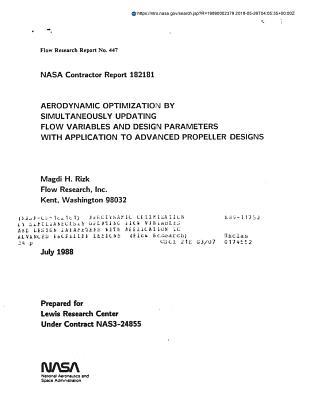Download Aerodynamic Optimization by Simultaneously Updating Flow Variables and Design Parameters with Application to Advanced Propeller Designs - National Aeronautics and Space Administration file in PDF
Related searches:
(PDF) On the Influence of Optimization Algorithm and Initial Design
Aerodynamic Optimization by Simultaneously Updating Flow Variables and Design Parameters with Application to Advanced Propeller Designs
Aerodynamic optimization method based on Bezier curve and radial
Aircraft Aerodynamic Design: Geometry and Optimization Wiley
Aerodynamic Optimization Based on the Euler and Navier-Stokes
Aerodynamic Shape Optimization with the Adjoint Method
Aerodynamic shape optimization by multi-fidelity modeling and
Trucks and SUVs Get Slippery - A New Focus On Aerodynamics
Go-kart aerodynamic optimization by means of CFD and RBF Mesh
4242 1497 839 1115 4446 4631 4858 3485 436 4658 489
[5] applied a genetic algorithm (ga) to optimize wind turbine blades, where the emphasis was put on structural stability.
Jun 5, 2015 secondly, the overall shape of the wing can be optimized as well. 70s saw the application of gradient-based models for aerodynamic shapes,.
The influence of the selection of the parameterization on the optimization has received relatively little consideration to date.
Aerodynamic optimization based on the moving reduced order model. The accuracy of the rom and the optimization is assessed at the end of each round by comparing the aerodynamic forces of the rom with those of cfd at the optimal point.
Automotive aerodynamics is the study of the aerodynamics of road vehicles. Its main goals are reducing drag and wind noise, minimizing noise emission, and preventing undesired lift forces and other causes of aerodynamic instability at high speeds.
And leifsson l, “ adaptive response correction for surrogate-based airfoil shape optimization,” 30th aiaa applied aerodynamics conference, aiaa paper 2012-3121, 2012.
Go-kart aerodynamic optimization by means of cfd and rbf mesh morphing carlo del bene, ruben anello university of rome tor vergata supervisor prof.
Under these circumstances, this paper aims to explore the application of adjoint approach in vehicle aerodynamic optimization with multiple objectives, transient.
Aerodynamic design algorithms require an optimization strategy to search for the best design.
Aerodynamic shape optimization (aso) is important in contemporary engineering design of complex systems such as aircraft and wind turbines. The use of high-fidelity partial differential equation (pde) simulations within the design process is becoming the standard.
Aerodynamic optimization procedure (aop) framework the aop procedure begins by defining the objective function, which is the aerodynamic property targeted to be minimized or maximized. The value of the objective function for each case depends on the building geometry, which is controlled by the optimization design variables.
A surrogate-based optimization algorithm for transonic airfoil design is presented. The approach replaces the direct optimization of an accurate, but computationally expensive, high-fidelity computational fluid dynamics model by an iterative reoptimization of a physics-based surrogate model.
This study investigates the aerodynamic tradeoffs of a box-wing aircraft configuration using high-fidelity aerodynamic optimization. A total of five optimization studies are conducted, where each study extends the previous one by progressively adding a combination of design variables and constraints. Examples of design variables include wing twist and sectional shape; examples of constraints.
Transfer learning is aerodynamic optimization implemented to reuse the experience as priori knowledge in the cfd-based optimization by sharing reinforcement learning neural network parameters.
Aerodynamic optimization based on the euler and navier-stokes equations using unstructured grids.
The kriging-based genetic algorithm applied to aerodynamic optimization design encounters a problem of unexpected sample size.
A computationally e cient optimization algorithm for aerodynamic design is presented. In our approach, direct optimization of a computationally expensive model is replaced by an iterative updating and re-optimization of a fast physics-based replacement model, following the surrogate-based optimization paradigm.
The control theory approach to optimal aerodynamic design was first applied to transonic flow by jameson [8,6,9-12].
Using an integrated workflow with parametric design, computational fluid dynamic (cfd) and fast fluid dynamic (ffd) simulations, structural analysis and optimization, this paper by ran zhang, christoph waibel and thomas wortmann, evaluates the relative suitability of cfd and ffd simulations for aerodynamic shape optimization (aso).
This paper studies the effect of design variables vector on automatic aerodynamic shape optimization in the adjoint method.
An optimization framework for aerodynamic design on unstructured meshes has been implemented. It includes a finite volume solver based upon a median-dual discretization, its discrete adjoint, and shape parameterization and mesh moving/deforming algorithms.
Mar 18, 2016 aerodynamic improvements will reduce drag by enabling your vehicle to navigate against the airflow with less resistance.
The design of aircraft wings can be examined in two ways, namely, by aerodynamic analysis and by structural analysis.
A design tool for aerodynamic shape optimization is developed by coupling a cfd solver and a gradient-based optimization package. The aerodynamic solver is a parallel viscous navier-stokes solver with a spallart-allmaras one-equation tur- bulence model to account for turbulence.
Aerodynamic shape optimization is usually a loop of an optimization model, an optimizer and an evaluation workflow. A new optimizer is proposed and tested for a typical aerodynamic shape optimization of missile control surfaces with computational fluid dynamics (cfd).
Cfd model with the above method was used to investigate aerodynamic effects as well as the mechanism of ballast flight, thus providing the theoretical basis for optimizing ballast bed profile and preventing ballast flight. Results show that pressure distribution exhibits large value at the center of the ballasted track and decreases at track edge.
Feb 16, 2021 as the design involves aerodynamics, structural dynamics, propulsion and controls, the number of parameters involved is considerably high.
Answer to this task is about aerodynamic shape optimization of an airfoil using xfoil cfd solver.

Post Your Comments: